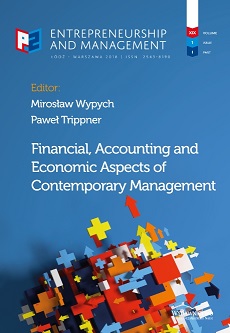Financial Aspects of Revitalization Process on the Example of Post-industrial and Post-Military Areas
Financial Aspects of Revitalization Process on the Example of Post-industrial and Post-Military Areas
Author(s): Magdalena Ślebocka, Marta SzajaSubject(s): Governance, Public Administration, International relations/trade, Developing nations, Rural and urban sociology, Economic development, Financial Markets
Published by: Społeczna Akademia Nauk
Keywords: revitalization; degraded area; financing of urban processes; post-industrial area; post-military area;
Summary/Abstract: Revitalization is an activity focused on reviving degraded urban areas, e.g. postindustrial and post-military areas, the purpose of which is to find a new application for them and lead to a state in which areas change their function. It is not limited only to renovation and modernization of the building – its aim is primarily to improve the quality of social life, aesthetics and image of the entire city. It should be remembered that conducting activities in this area, in the first place, required precise determination of financial resources, allocated to them in the long-term horizon. Therefore, raising funds from both public institutions and private investors is an extremely important element including planning of the revitalization activities. In this context, on the basis of the available literature and source documents, the paper discusses the basic financial sources of financing revitalization projects and the financial challenges that local authorities face when trying to resuscitate degraded areas and give them a more functional character than previously. The main goal of the paper is to present the significance of revitalization in the urban development process and to present and compare the basic sources of financing revitalization projects in post-industrial and post-military urban areas. The research hypothesis assumed that despite the multitude of financial tools at the disposal of local self-government, funds allocated to revitalization projects come mainly from EU funds and national government programmes. Thanks to them, irrespective of the character of the city, local self-government units can carry out planned revitalization projects and actively support the whole process of renewal of degraded urban areas.
Journal: Przedsiębiorczość i Zarządzanie
- Issue Year: 19/2018
- Issue No: 1.1
- Page Range: 293-308
- Page Count: 16
- Language: English

